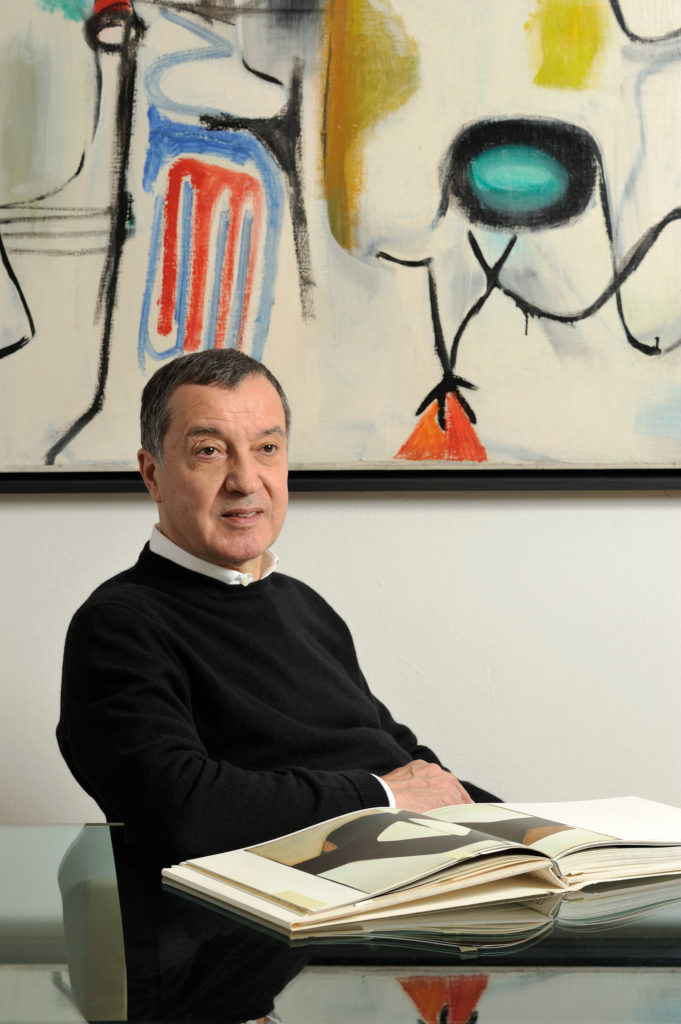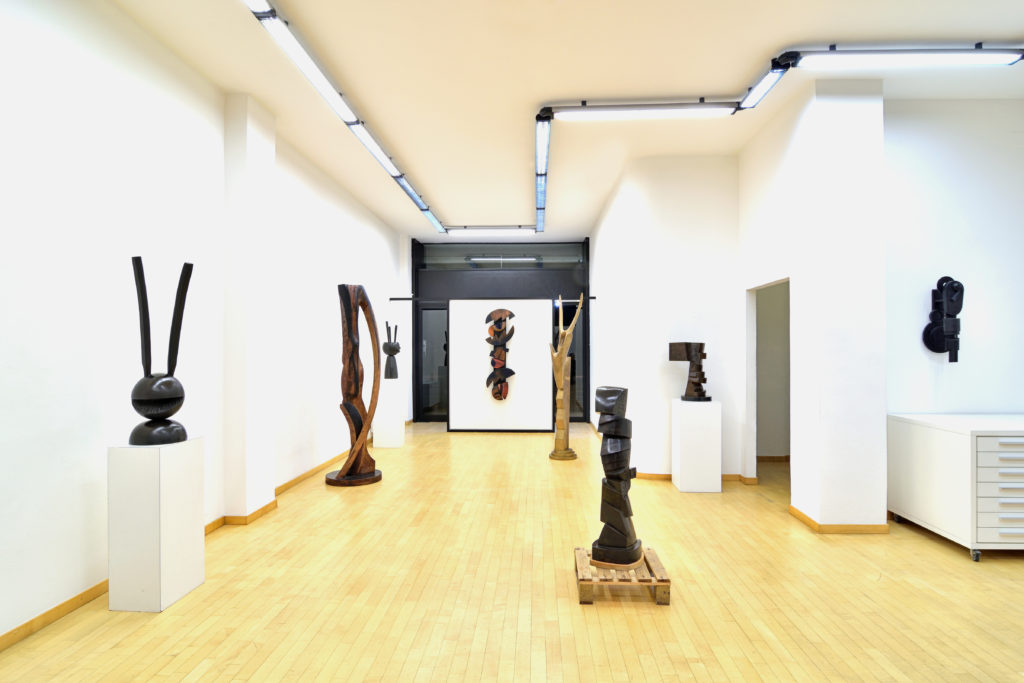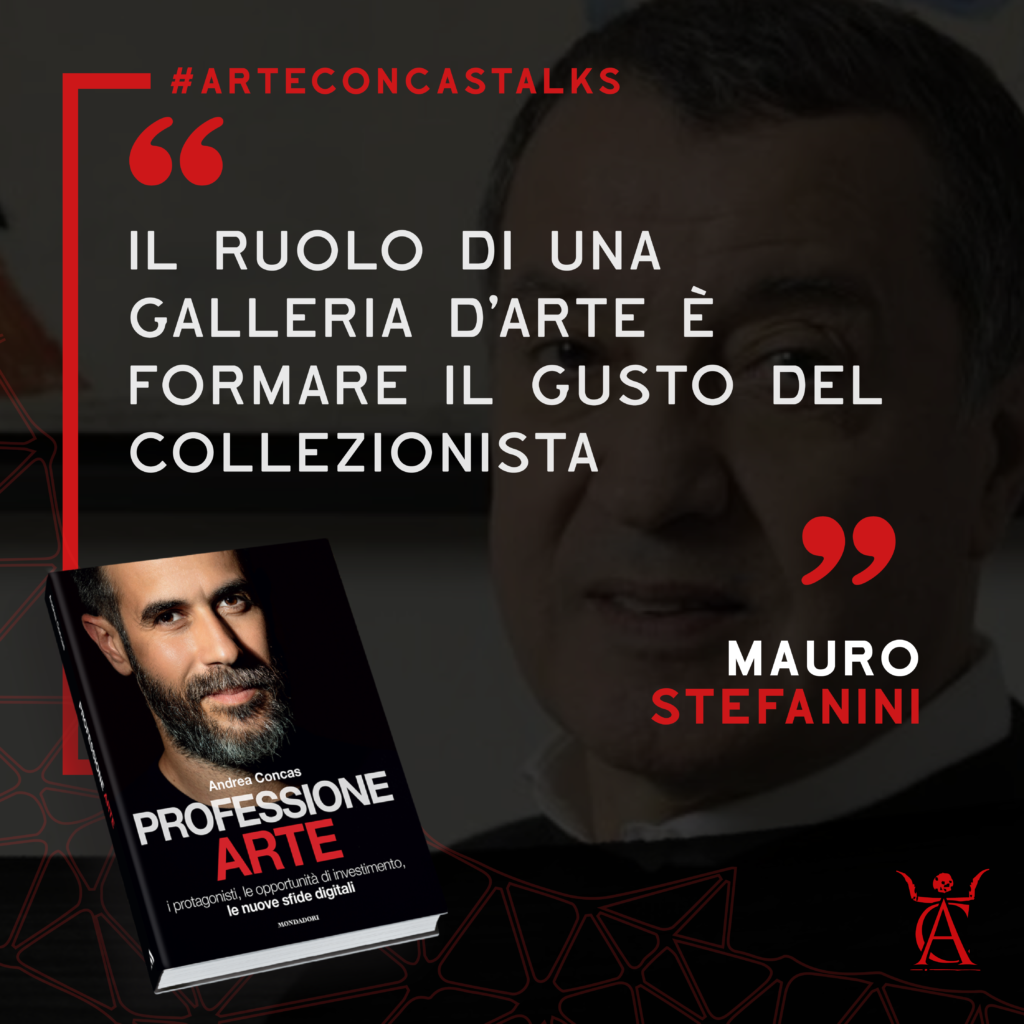Le Interviste di ProfessioneArte.it
He is Mauro Stefanini, gallerist and president of ANGAMC
Five questions to know in advance the great art professionals, the daily challenges to face, the choices that have determined their path in the art system and in the art market, the digital changes and the advice for those who want to start the same career in collaboration with ProfessioneARTE.it.
From collector to gallerist the step seems to be short, yet not so simple.
This is the path undertaken twenty years ago by Mauro Stefanini, entrepreneur and gallery owner, since 2016 President of ANGAMC.
Mauro Stefanini, an entrepreneur with a passion for art, began his career in the art world as a collector, focusing his attention on informal Italian art, sculpture, Abstract American Expressionism and collage art, choices that are still evident today in the exhibition projects presented at the Open Art Gallery in Prato, which turns twenty.
A path along his path, for a stimulating work, but one that requires great competence and professionalism, with no room for improvisation.
For this reason, as Stefanini says in the interview “passion alone is not enough to carry on such a complex work“, the rest is all to be read…
 Mauro Stefanini is Gallerist and Founder of the Open Art Gallery of Prato, as well as President of ANGAMC – Associazione Nazionale Gallerie d’Arte Moderna e Contemporanea.
Mauro Stefanini is Gallerist and Founder of the Open Art Gallery of Prato, as well as President of ANGAMC – Associazione Nazionale Gallerie d’Arte Moderna e Contemporanea.
Mauro Stefanini, from Bologna, finds in the industrious city of Prato the ideal location for his entrepreneurial vocation where, for almost forty years, he has been at the head of a leading company in the field of services for the textile, clothing, yarn and furnishing industry, careful to promote creativity and marketing.
In 2000, putting his life’s passion to good use, he founded the Open Art Gallery in Prato, where he organized important monographic exhibitions of artists such as Jiri Kolar, Fernando De Szyszlo, Conrad Marca-Relli, Toti Scialoja, Walter Fusi, Paul Jenkins, He indulged his passion for informal Italian and international painting and dedicated to his other passion, Italian sculpture of the twentieth century, exhibition projects (on display artists such as Agenore Fabbri, Marino Marini, Francesco Somaini, Mirko Basaldella, Beverly Pepper, Mauro Staccioli).
The latest international project, an exhibition focused on Abstract American Expressionism entitled Made in America, featured masterpieces created during the golden age of the American movement by artists such as Sam Francis, James Brooks, Paul Jenkins, Conrad Marca-Relli, Michael Goldberg, Norman Bluhm.
The last exhibition before the forced closure of March 2020, an anthological exhibition that retraced the entire career of the Florentine sculptor Guido Pinzani, was a great success with the public and sales, with the placement of two historical sculptures in the prestigious collection of the MART (VAF Stiftung collection).
On the strength of his experience and strong managerial skills, in 2016 he became President of ANGAMC – National Association of Modern and Contemporary Art Galleries), an association which he still chairs today.
_________________________
1.How did your journey into the art world begin?
I started collecting in the 80s, seduced by the fascination released by the works of art and driven by the desire to be surrounded by them.
My interpretation of being a collector is not very different from the one I give to the figure of the gallery owner.
For me, an entrepreneur with a passion for art, collecting has never been just a hobby or a respectable “obsession” but above all a way of being an active part of the contemporary cultural environment.
In this sense, my evolution from collector to gallerist, accomplished with the foundation of the Open Art Gallery in 2000, has meant the possibility to contribute in a more incisive way, in my own small way, to the cultural dynamics of this country, thanks to the rediscovery of forgotten Masters, the production of volumes accompanying exhibitions, the diffusion in Italy of the production of foreign artists.
I have applied the concepts of innovation, investment, creativity and work culture borrowed from my forty years of experience in the field of entrepreneurship to my work as a gallery owner and I have built my collection on the basis of the same interests matured during the years of collecting: it is in the second half of the twentieth century that my field of action is located, nourishing my most vibrant passions for Italian informal art, sculpture, American Abstract Expressionism and the art of collage, of which Jiri Kolar is an undisputed Master.
2.How would you describe your profession today?
It is an exceptionally stimulating job that can give great satisfaction, but it must always be done with competence and professionalism.
Buying a work close to my sensibility and placing it in prestigious private collections or permanent museum collections is a source of great pride.
It is a profession that has evolved over time: managing the activity has become more complex due to the exponential increase in costs and the increasingly restrictive bureaucracy for the serene work of a gallery.
Having said that, focusing on the quality of the works proposed and specializing in movements or sectors not dealt with by colleagues is the right answer to impose one’s own idea within the national and international market, allowing to achieve excellent results in terms of sales and turnover.
3.How has your profession changed over time?
The search for a work of art has always been the most exciting aspect of my work. A few years ago, one would arm oneself with one’s own network of contacts, built with enormous sacrifice, a telephone and a passport, and travel far and wide around the world to secure a jewel to offer, proudly, to one’s clientele or to cultivate the knowledge of an artist through studio visits.
With the advent of the internet and the consequent globalisation of the art market, while finding a work of art has become simpler, selling it has become much more complex.
Nowadays the collector just needs to set an alert on a specialized search engine and with a click he connects to any auction house to compete with other bidders for the work of his interest.
The exponential increase in sales channels is, of course, accompanied by much tougher competition.
I am consoled to know that a certain type of clientele feels a strong need to rely on professionals in the sector, being wary of operating independently in a market that can be very insidious, if you do not know it thoroughly.

4.What impact is digital having on your industry?
E-commerce is taking the lion’s share in any market sector.
The proposal and the online sale of the works represents the new frontier also in the art market: social media such as Instagram and Facebook and platforms such as Artnet and Artsy represent a valuable tool that allows us to reach international collectors that otherwise would not be possible to intercept through traditional channels (such as fairs and gallery exhibitions), channels that as we know at the moment are blocked for social and health reasons.
However, I doubt that the virtual world will be able to replace the “real” world in the short term because of the need, still alive, for interpersonal contact and the pleasure of finding oneself in the sparkling atmosphere of fairs and exhibitions in the gallery, where it is possible to admire the works live and come into direct contact with them.
5.What would you recommend to a young man who wants to take up his profession?
Passion alone is not enough to carry on such a complex job.
It is necessary to study, travel, attend fairs, museums and galleries, develop a dense network of relationships: collectors are increasingly up-to-date and demand that the operators to whom they entrust their savings are very well prepared.
It is also good to start with a good economic solidity: the costs of running a gallery are high if you think of the charges resulting from participation in trade fairs, the production of exhibitions and related catalogues, the purchase or rent of the fund and finally the purchase of works of art.
To finish one last piece of advice: never take shortcuts, the apprenticeship is essential to grow professionally.






